Retro cleaning products of yesteryear
Take a squeaky-clean trip down memory lane
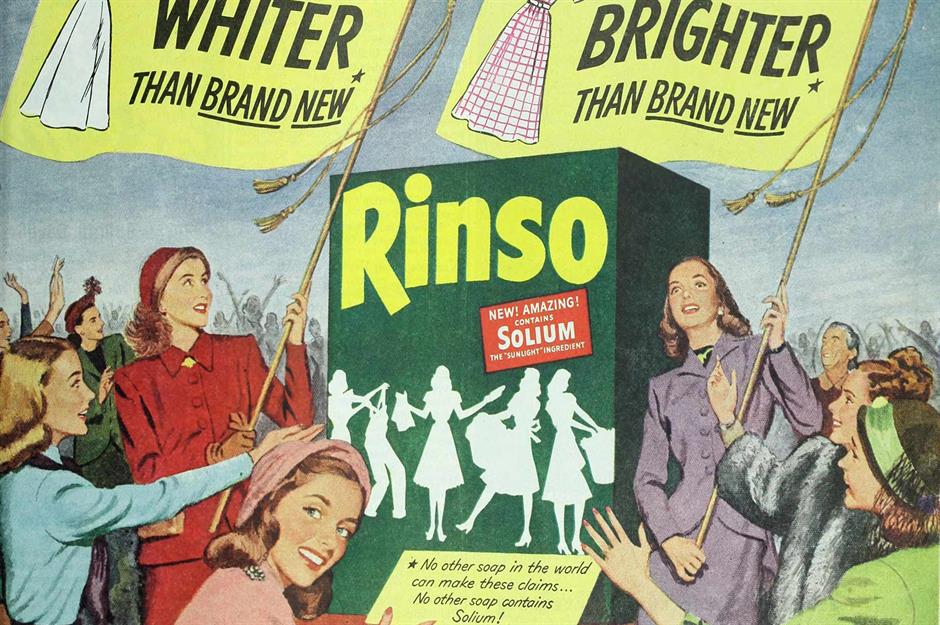
Whether it's the comforting lemony zing of your grandparents' dish soap or the clink of glass bleach bottles, vintage cleaning products bring with them a wave of nostalgia. While some brands are still household names that have endured centuries, others have been lost in time as technology and consumer tastes have evolved.
Click or scroll on to take a trip back down memory lane and revisit the classic scents, suds and solutions that made a clean home feel timeless. How many can you remember from your childhood?
1846: Arm & Hammer baking soda
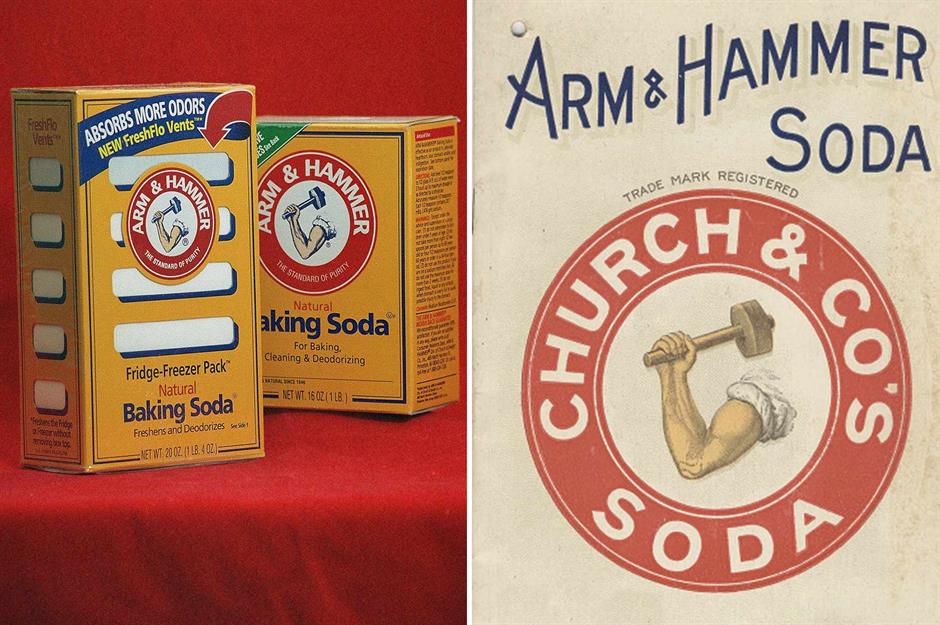
This bright yellow box with the red logo is unmistakable. Arm & Hammer baking soda has been a popular tool for cleaning your home since 1846. Back then, it was packaged by hand in paper bags for distribution.
While it was originally devised for baking, it quickly gained a reputation for its cleaning utility and today, the global brand has even expanded into toothpaste, laundry and cat litter.
1870s: X-RAY stove polish
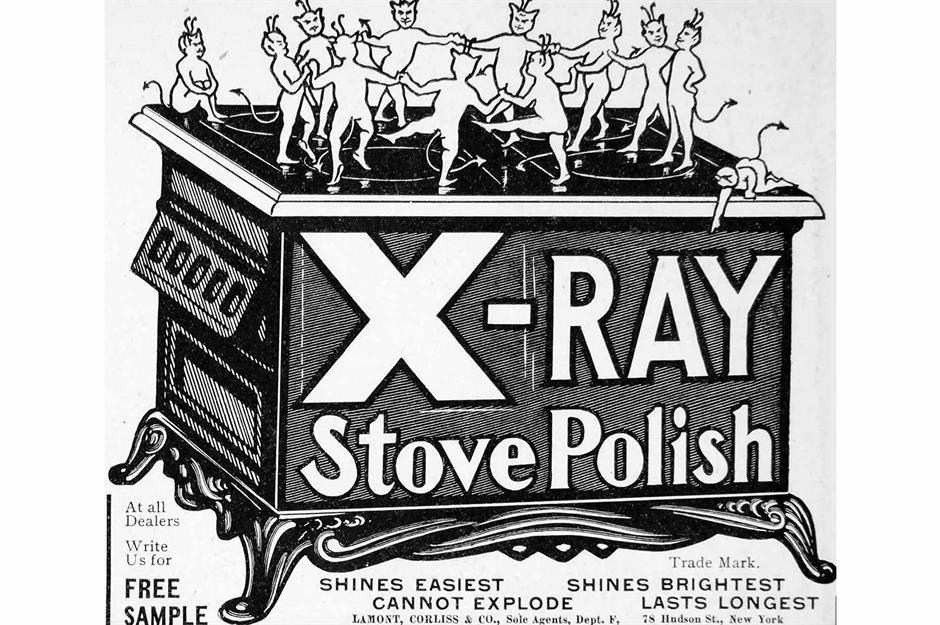
It’s always a relief to know that the cleaning product you just purchased is not likely to blow up your home or damage your appliances. Guaranteed to ‘go twice as far as paste or liquid stove polishes’, this X-RAY ad was first published around 1890.
The company was founded in the 1870s and its stove polish was produced and predominantly sold in the US. Back in 1902, the polish cost five cents to buy, the equivalent of $1.86 (£1.38) today.
1883: Mrs Stewart's Liquid Bluing
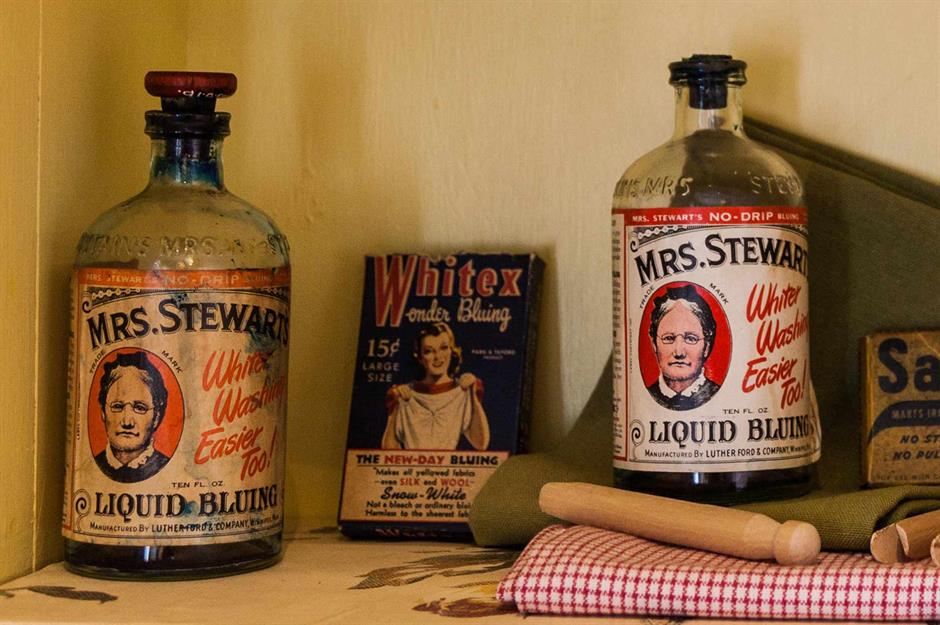
Mrs Stewart's Liquid Bluing has been keeping laundry whiter than white since 1883. This time-tested staple has a secret ingredient: an additive that alters the tone of the fabric to brighten and whiten.
When the product was first released, bottles retailed for around 15 cents, which equates to $4.75 (£3.50) when adjusted for modern inflation.
The earliest glass bottles of the cleaning solution were hand-blown. However, these days the product is sold in recyclable plastic bottles across the US and Canada.
1886: Bon Ami powder cleanser

Originally made from soap and a quartz derivative called feldspar, Bon Ami products were designed to clean without damaging any home fixtures, hence the catchphrase ‘Hasn’t scratched yet!’.
Developed in 1886 by the JT Robertson Soap Company, the original scouring powder soon spawned a number of household cleaning products, including the powder cleanser shown in these adverts from 1918 and 1943.
Produced in the US, the cult cleaning product is still on sale globally today.
1889: Lysol disinfectant
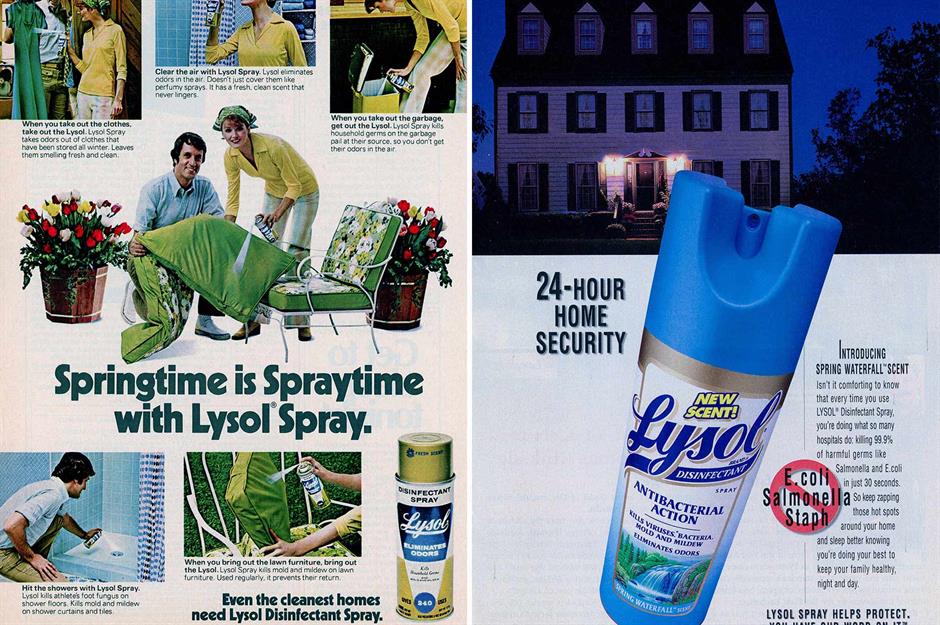
Originally introduced in 1889 to help combat Germany's cholera epidemic, Lysol's liquid disinfectant was used to sanitise hospitals across the world before its aerosol iteration entered homes in 1962.
On the left, this magazine advert from 1978 depicts the product's varied uses, from eradicating garbage odours to sanitising garden furniture. Meanwhile, in the advert on the right from 2000, Lysol is marketed as a home security measure in the wake of the public health panic over Salmonella and E. coli.
1891: Borax cleaner
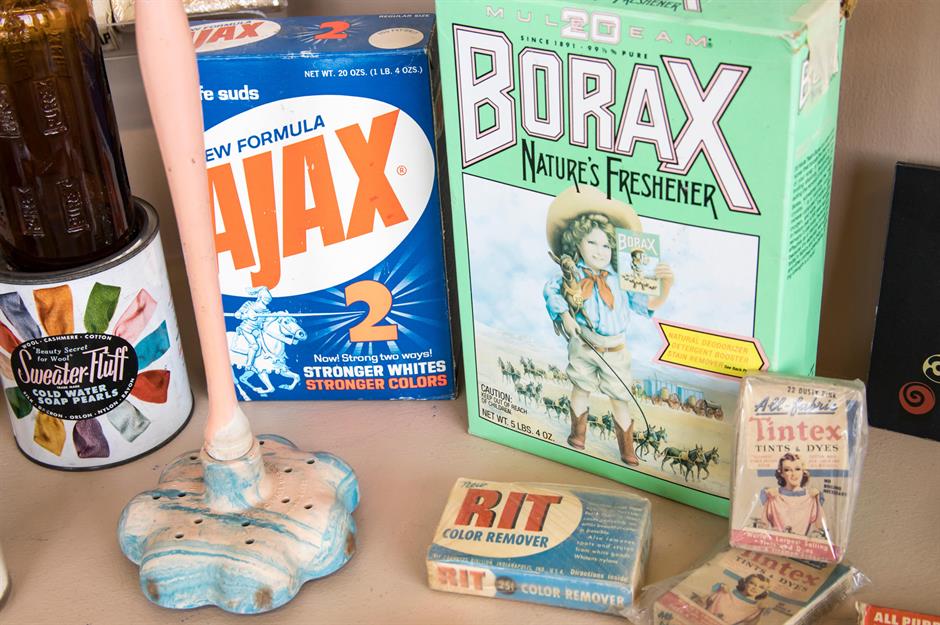
Borax is a powdery mineral that has been used as a household cleaner since it was commercially launched in the US in 1891 by 20 Mule Team.
While it's still a laundry room staple in North America, the salt cleaner is now something of a controversial product and was banned in the UK and EU in 2010. It might be natural, but exposure can lead to serious skin irritation and respiratory issues thanks to its PH of 9.5. It can also be toxic if ingested.
1893: Fels-Naptha laundry soap

This American cult-favourite stain-remover is a laundry soap bar that's been around since 1893. It's said to remove greasy and oily stains including chocolate, sweat and make-up.
Back in 1924, UK homeowners could expect to pick up a bar of Fels-Naptha for less than a sixpence, which is in the region of £1.55 ($2) in modern money.
On supermarket shelves for more than a century, it's had a few recipe changes but continues to be beloved by consumers.
1904: VIM cleanser and polisher

VIM scouring powder first appeared in our cleaning cupboards in 1904. A competitor to Ajax, its name is thought to refer to the Latin word 'vim', which translates to 'power'.
While the original powder form was discontinued in some countries, it was relaunched in the 2000s in the UK.
VIM's extended range of products, which includes detergent liquids, creams and gels, continues to clean plenty of homes in Canada, Sri Lanka and India.
1905: Old Dutch cleanser
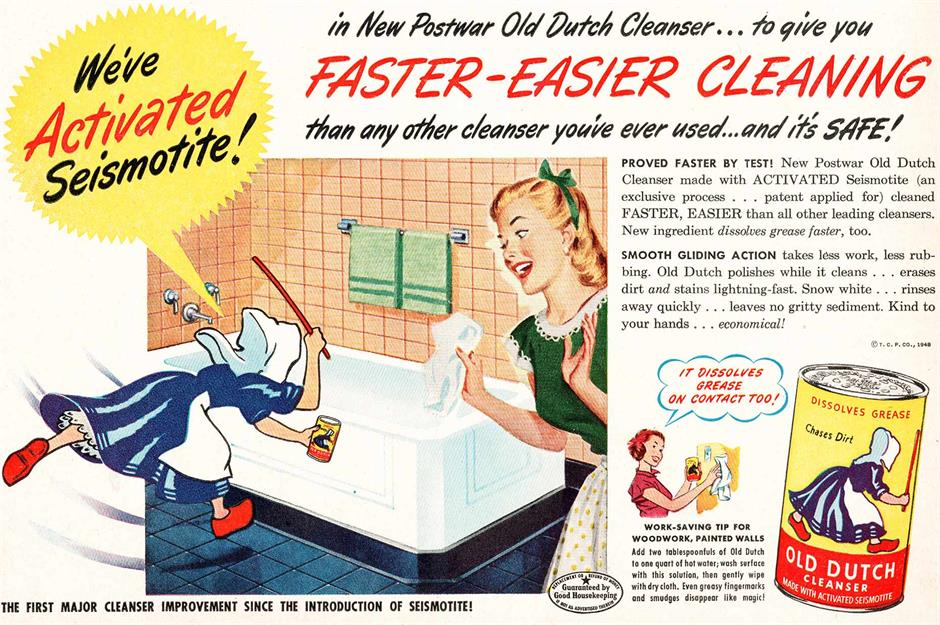
With its instantly recognisable logo, a bonneted woman brandishing a stick, Old Dutch is one of the most iconic cleaning products of the 20th century. Brought to market in 1905, the brand claimed its product would ‘chase dirt [and] make everything spick and span’.
Featured in this advert from 1948, the Old Dutch powder cleanser enjoyed widespread success in the 1940s and 50s, especially across North America.
In 1937, the cleanser was sold in the US for 10 cents, which is around $2.22 (£1.65) in modern money.
1910: Rinso laundry detergent
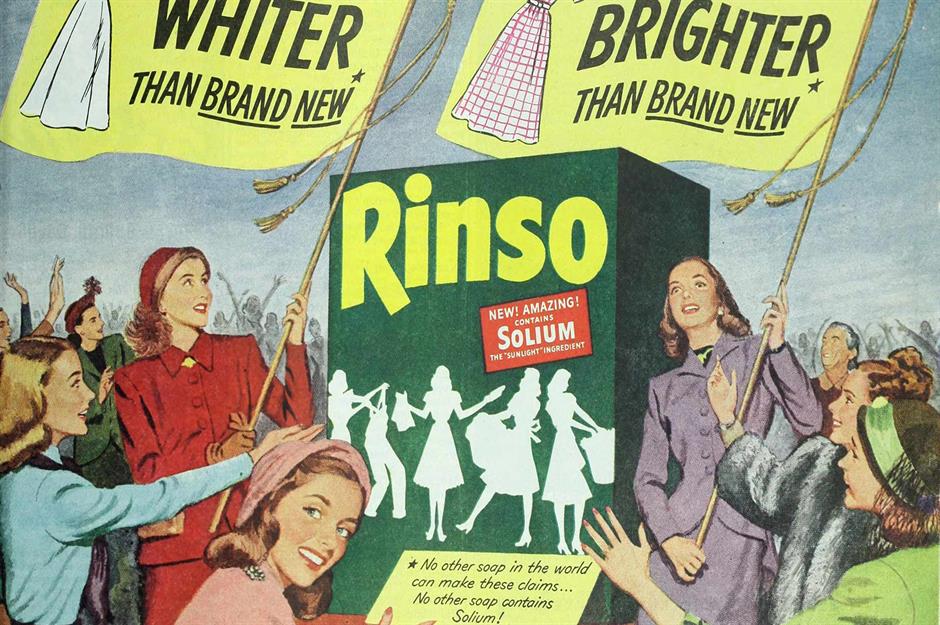
Iconic laundry brand Rinso was launched in 1910 and quickly became a hit across North America, Brazil and the UK. A firm proponent of the marketing jingle, it sponsored a range of American radio programmes in the mid-20th century.
Unfortunately, the company's prolific advertising was not enough to compete with its main washing powder rival, Tide, and it all but disappeared by the 1970s.
Despite its fall from grace, Rinso is still a household name in parts of Central America, Asia and Turkey.
1910s: General Electric vacuum
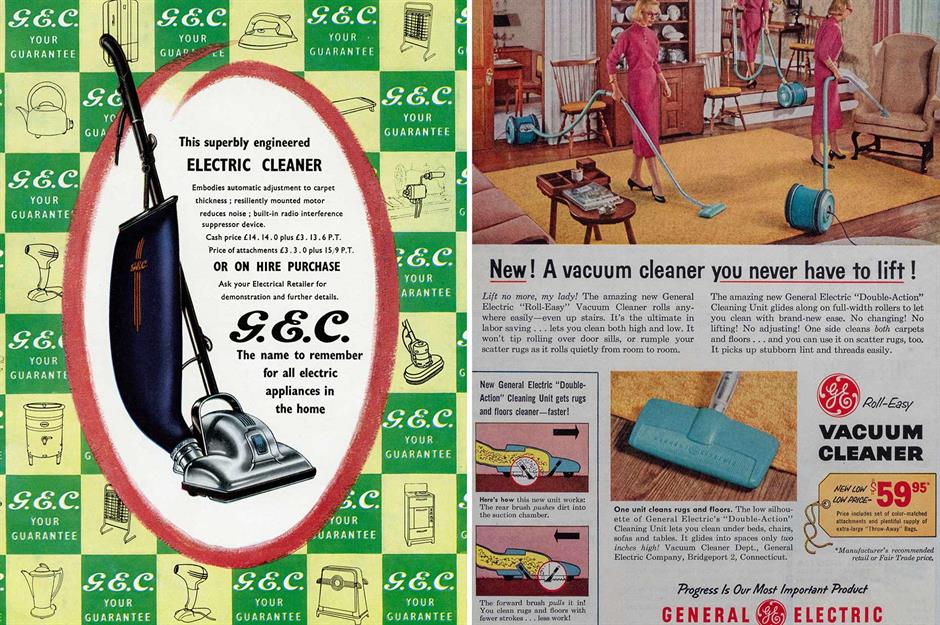
Founded in 1892, General Electric has turned its hand to everything from lasers to commercial jet engines. In the 1910s, the company expanded its catalogue to electric home appliances, including vacuum cleaners.
The American multinational brand's products included the Roll-Easy vacuum, pictured on the right, which retailed for $59.95 in the US in 1957, around $682 (£505) today. Meanwhile, on the left, this vacuum was sold in the UK for around £14 in 1950, the equivalent of £413 ($557) in modern money.
1913: Clorox bleach
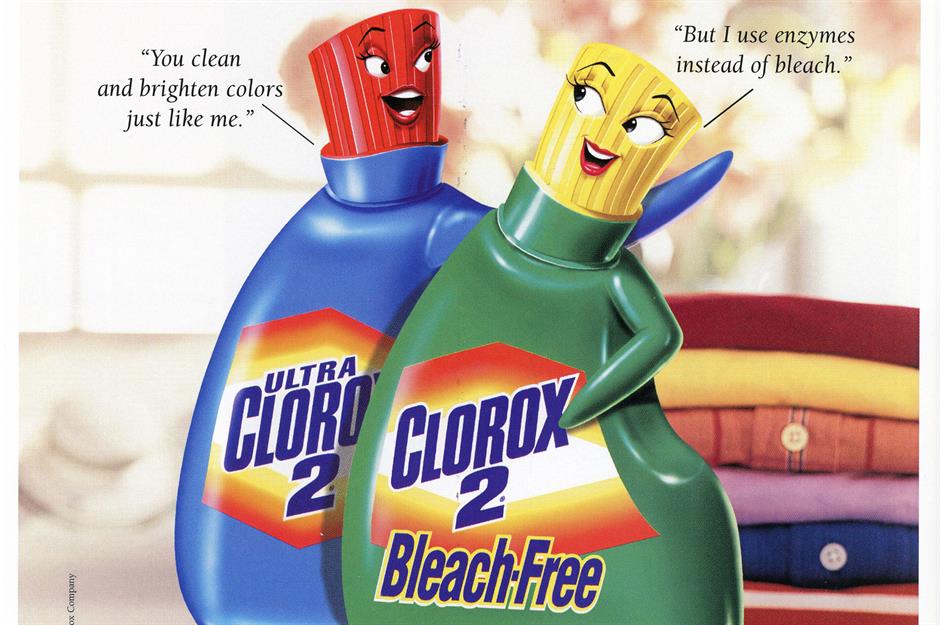
Clorox bleach first went on sale in 1913 in the US, however, it was the entrepreneurial nouse of shareholders William and Annie Murray that made it a soaring success. William streamlined operations in the initially struggling company, while Annie gave away free samples to customers in the grocery store she ran. Consumers loved it and the rest is history.
Today, Clorox is a familiar household name and is stocked in almost every supermarket in the US, Canada and Latin America.
1921: Electrolux vacuum cleaner

Swedish company Electrolux was founded in 1919 and launched its first vacuum cleaner in 1921. The LUX 1 weighed in at a hefty 31 pounds (14kg), but it was still one of the lightest models on the market.
As the years went by, Electrolux continued to develop new and innovative machines, including these designs from the 1960s, which feature a combined carpet cleaner and floor polisher.
The home appliance company still sells its products globally to customers in 150 countries each year.
1923: Drāno drain cleaner
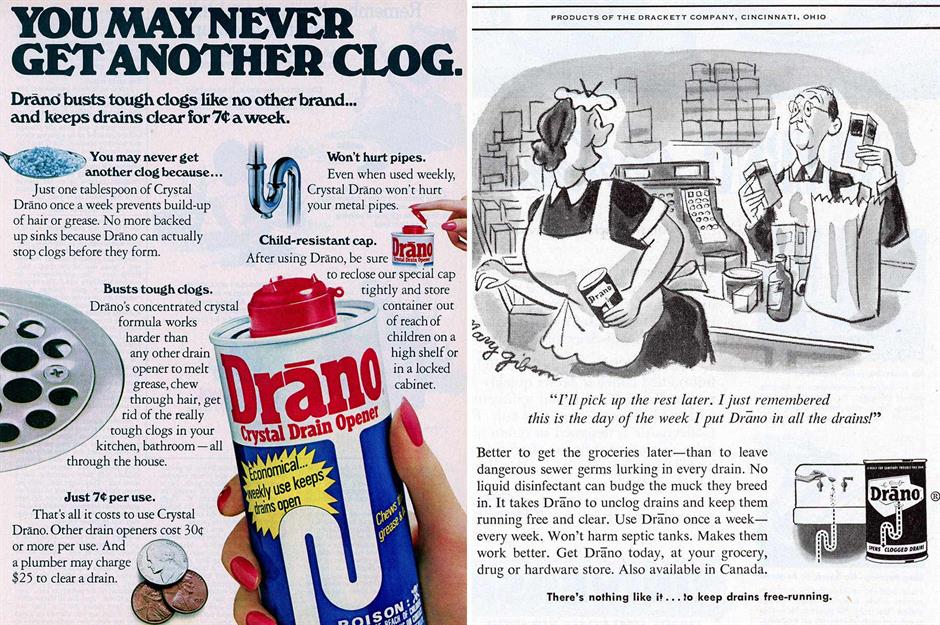
Invented in 1923 and initially marketed to households in the US and Canada, Drāno revolutionised North American plumbing systems with its powerful and fast-acting drain cleaner. 80 years later and Drano is still going strong and is now a familiar sight in many homes around the world.
The advert on the right from 1978 promotes Drāno's economical price tag to US consumers. Back then, it cost just seven cents per use – that's around 34 cents (25p) when adjusted for today's inflation.
1932: Johnson's Wax

A cleaner and polisher in one, Johnson's Wax's first self-polishing floor wax was launched in 1932 and became an instant success around the world.
In the US, a 16-ounce (0.5l) can of the brand's Glo-Coat wax sold for 75 cents in 1933 – that's around $18.45 (£14) in today's money.
The multipurpose cleaner was phased out at the end of the 20th century before being revived thanks to popular demand. In some countries, including the US, it's sold as Jubilee Kitchen Wax.
1938: Carnu car wax
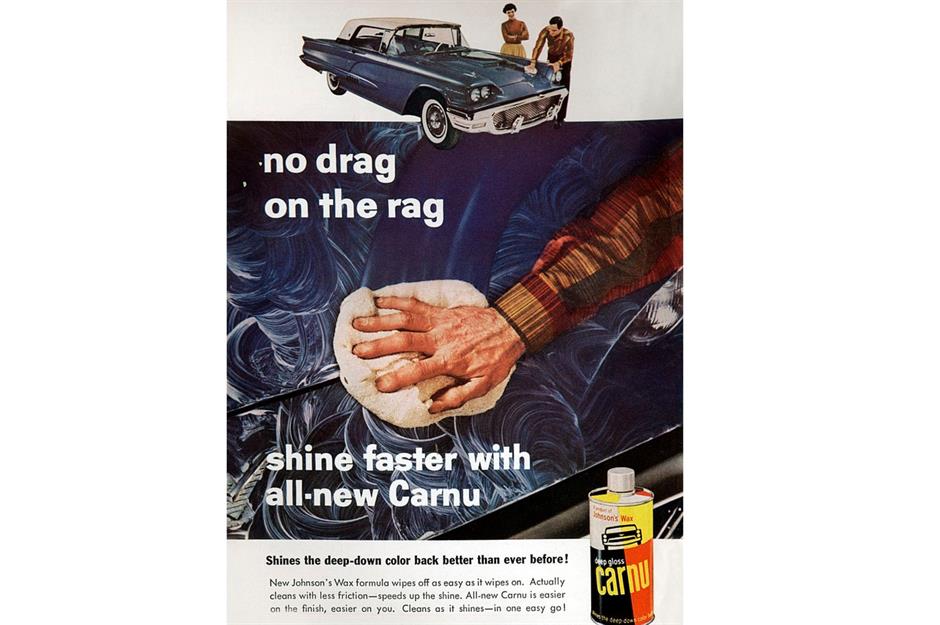
A cleaning product marketed towards men was something of a rare occurrence in the 1950s, but this advert broke the mould. In just a decade, almost 58 million cars were produced and sold in the US, boosting sales of vehicle cleaning agents in tandem.
First launched in 1938, Johnson’s Carnu car wax featured heavily on the popular US radio comedy programme, Fibber McGee and Molly. It's since been discontinued, but old adverts and packaging can still be found on online marketplaces.
1946: Tide washing powder
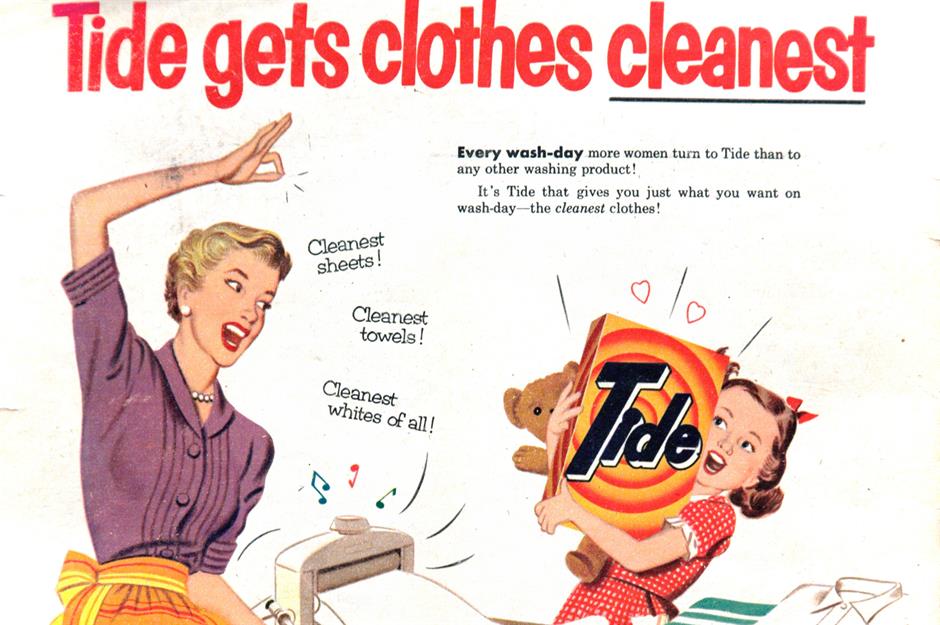
Introduced to US test markets in 1946 before launching in Canada two years later, Tide quickly established itself as the frontrunner in the detergent industry and became a laundry room staple.
The product is now in such high demand that there’s even a black market for the ‘liquid gold’! Despite being priced around 50% higher than the average detergent product, Tide is still very much North America’s darling.
1947: Ajax bleach cleaner
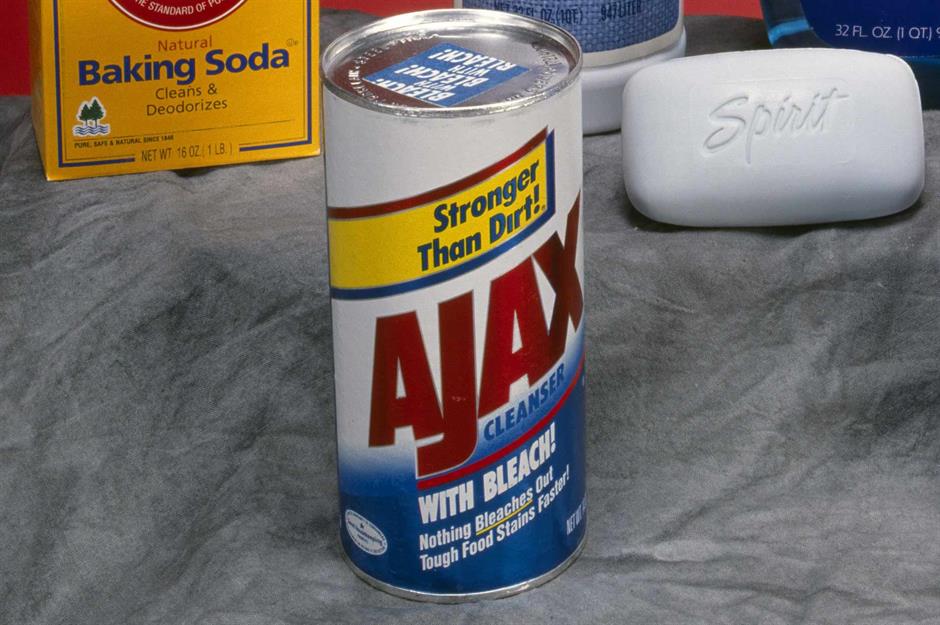
Named after the Greek mythological hero, Ajax was launched in 1947 with the slogan ‘Stronger than dirt!’. The brand enjoyed widespread success in the 50s and 60s, cementing its bleach-based cleaner as a household favourite.
As well as being a staple in North American homes, the Ajax brand has enjoyed success in Australia and New Zealand.
1950: Fairy Liquid

Manufactured by Procter & Gamble, Fairy Liquid was launched in 1950, with its iconic white and green bottle and red cap. The washing-up liquid was first produced in the UK before making its way onto international supermarket shelves.
Fairy Liquid remains one of the UK's most iconic cleaning products, however, it's known by other names across the world, including YES in Sweden and JAR in areas of Europe, including the Czech Republic.
1952: Flash cleaner

One of the world's biggest household cleaning names, Flash made its debut in 1952 when its powder cleaner hit supermarket shelves. It was originally designed to combat the grime and dirt found on ships.
While it goes by Flash in the UK, the brand is commonly known as Mr Clean in the US and Canada. Branding in the latter countries features a muscular, bald man with folded arms, who some believe is a sailor.
1953: Lestoil cleanser
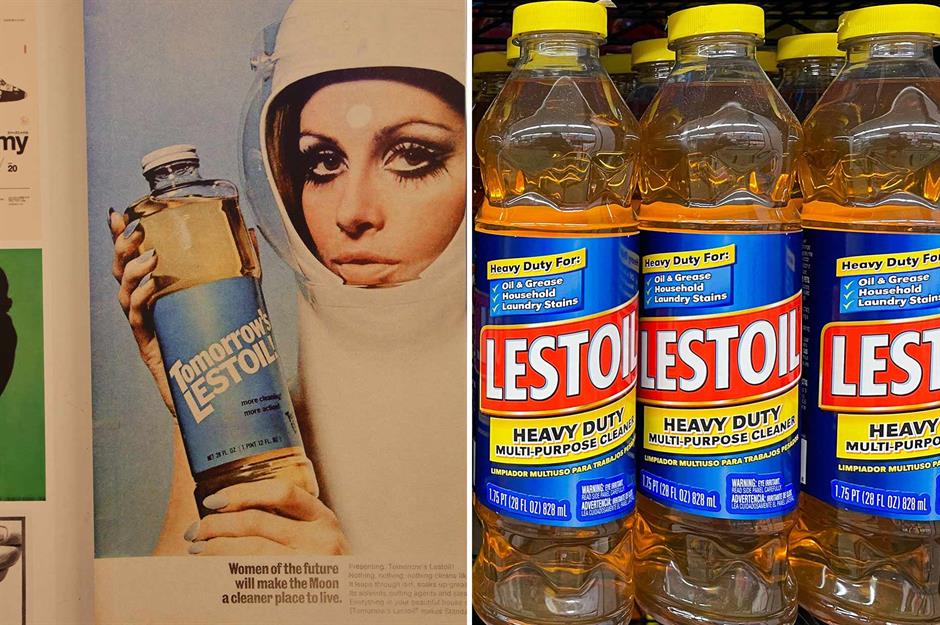
Introduced to the market in 1953, Lestoil launched a series of catchy TV commercials in the 1960s and 70s that cemented the brand in the American consumer consciousness.
Following Yuri Gagarin’s successful orbital flight in 1961, Lestoil capitalised on the obsession with all things space with the advert on the left, which ran with the tagline: "Women of the future will make the moon a cleaner place to live." Half a decade on and men may be cleaning more, but the moon remains dreadfully dusty, sorry Lestoil.
1958: Pledge furniture polish
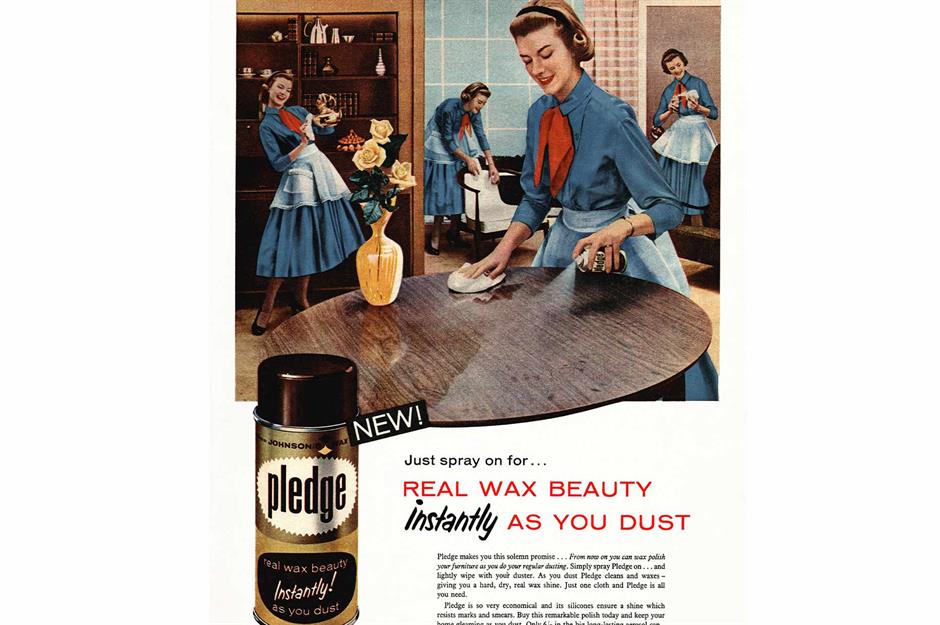
Pledge furniture polish first hit shelves back in 1958. Produced by SC Johnson and initially launched in the US, one of the early adverts for the wax-based spray is pictured here. Dating back to 1959, it promotes the time efficiency of combining waxing into your dusting routine.
Pledge is still a well-known name today and has many faces across the globe. It's known as Blem in Argentina, Pronto in Italy and Pliz in France.
Love this? Discover the best ways to clean and organise your home
Comments
Be the first to comment
Do you want to comment on this article? You need to be signed in for this feature